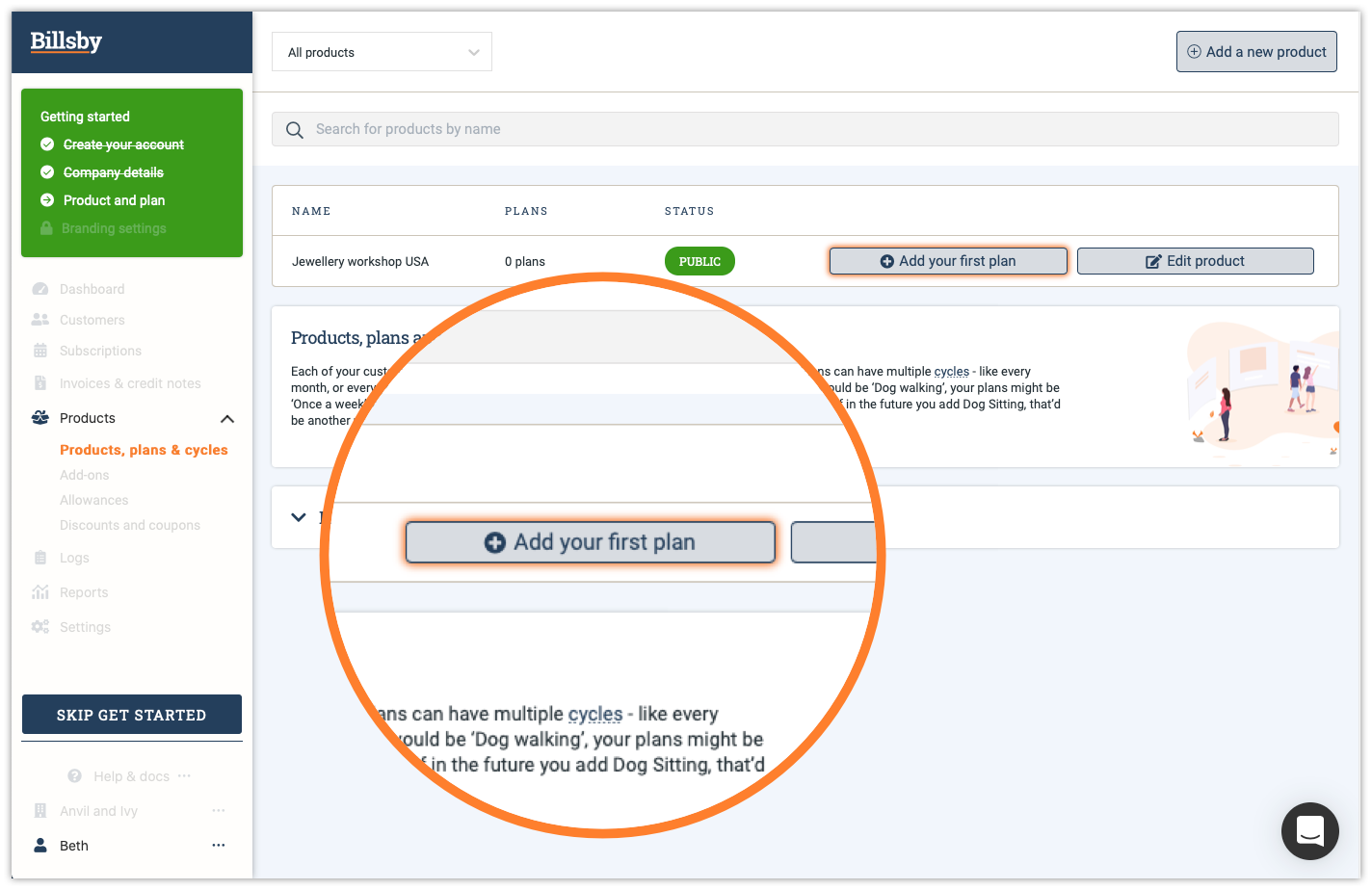Plans
Once you've created your product, you'll need to start adding plans.

A plan is what your customer will subscribe to. Each plan must be named and labelled with features and other attributes that determine what your customer will receive and how they will receive it.
There are a range of different pricing models you can use for your plan, including a flat fee, price per unit, volume based, tiered and ranged.

Flat fee
Flat fee pricing is for plans that have a fixed recurring charge each cycle.
For example, if your product is tiered using the conventional Basic, Standard, and Premium structure, you would use a flat fee pricing model with three plans available for each product that is marketed to a different location.
Here's an example of a flat fee pricing model that your standard video streaming platform would use for their 'Video Streaming UK' product:
| Plan | Unit Cost | Frequency of Charge |
|---|---|---|
| Basic | £5.99 / month | Once a month |
| Standard | £9.99 / month | Once a month |
| Premium | £13.99 / month | Once a month |
Remember, the currency can be adjusted for each product that is marketed to a different location.
Tiered
With tiered plans, a customer can buy multiples of a specific plan.
So, let's say you sell user accounts to use a software product - you could create a tiered structure that looks like this:
Plan A: 1st to 5th account - $20 each
Plan B: 6th to 10th account - $15 each
Plan C: 11th account and after - $10 each
Then, the system will calculate the total price from each tier. Here's an example of a tiered plan system:
| User and Accounts | Total Price of Plan | Name of Plan |
|---|---|---|
| User with 4 accounts | $80 | Plan A |
| User with 7 accounts | $130 | Plan B |
| User with 20 accounts | $275 | Plan C |
In effect, the customer buys accounts from each tier, starting with the lowest and working their way up.
Per unit
A per unit plan is based on the quantity of units the customer has signed up for and is charged on a price per unit basis.
So, let’s say you run a coffee subscription business - you would have a per unit pricing model, charging $8 per bag of coffee every two weeks. Each additional bag of coffee would also be charged at $8. So, if your customer signed up to 2 bags of coffee every two weeks, they’d be charged $16.
Volume
A volume based pricing model charges customers based on the quantity of units they wish to purchase, but the price per unit is discounted based on volume.
For example, if your coffee subscription company wanted to use a volume pricing model, it could look something like this:
- $8 per bag (for 1-3 bags)
- $6 per bag (for 4-6 bags)
- $5 per bag (for 6 bags and more)
As you can see, the price is reduced dependent on the quantity of bags that the customer wishes to purchase. The price of the plan will be discounted in accordance with the amount of units (bags) that the customer wishes to purchase on your plan.
So, if your customer wanted to sign up for $5 they would fall into the third tier and be charged $5 x 6 bags = $30 total.
Ranged
The ranged pricing model also uses tiers to define brackets, but the prices of these tiers are set at a flat price.
So, let's say you want to sell user accounts to use a software product - you could create a pricing structure that looks like this:
Plan A: 1 to 5 user accounts - $20
Plan B: 6 to 10 user accounts - $30
Plan C: 11 to 20 user accounts - $60
Plan D: unlimited user accounts - $100
So, if your customer wanted to sign up with 18 users accounts they would fall into the third tier and be charged a flat fee of $60. Simple.
Updated almost 5 years ago
